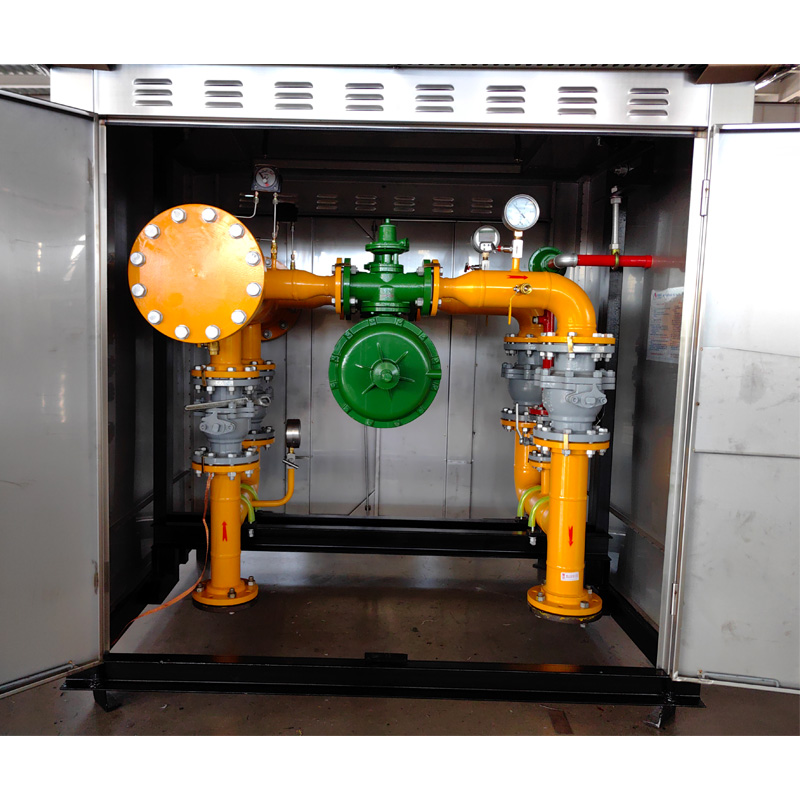
Nov . 27, 2024 02:22
Back to list
Gas Heat Exchanger Design Principles and Efficiency Optimization Techniques
Understanding Gas Heat Exchangers
Heat exchangers are crucial components in various industrial applications, facilitating the transfer of heat between two or more fluids. Among the various types of heat exchangers, gas heat exchangers play a vital role in many processes, including heating, cooling, and energy recovery.
A gas heat exchanger is designed to transfer thermal energy between a gas and another fluid, which could be either a gas or a liquid. The primary purpose of these devices is to maximize heat transfer efficiency while minimizing pressure drop and fouling. Whether utilized in HVAC systems, power generation, or chemical processing, gas heat exchangers are pervasive in modern engineering.
Types of Gas Heat Exchangers
There are several types of gas heat exchangers, categorized based on their design and operational principles. The most common types include
1. Shell and Tube Heat Exchangers Comprising a series of tubes, these exchangers allow one fluid to flow through the tubes while another fluid flows around them within a larger shell. This configuration provides a large surface area for heat transfer and is easy to maintain and clean.
2. Plate Heat Exchangers These consist of thin, corrugated plates stacked together to create channels for the gases to flow through. Plate heat exchangers offer high heat transfer efficiency and require less space than shell and tube designs, making them suitable for applications with limited room.
3. Air-to-Air Heat Exchangers Commonly found in HVAC systems, these exchangers transfer heat between two streams of air. They can recover energy from exhaust air to preheat incoming fresh air, enhancing overall system efficiency.
.
Principles of Heat Transfer
مبادل حراري للغاز

The effectiveness of a gas heat exchanger is determined by its ability to transfer heat between the fluids while maintaining their distinct phases. The key mechanisms involved in heat transfer are conduction, convection, and sometimes radiation, depending on the application.
Convection occurs through the movement of fluid, while conduction involves the direct transfer of heat through solid boundaries. To optimize these processes, heat exchanger designs often incorporate features such as enhanced surface structures, which promote turbulence and increase the surface area for heat transfer.
Performance Metrics
When evaluating the performance of gas heat exchangers, engineers consider several critical metrics
- Overall Heat Transfer Coefficient (U) This parameter reflects the ability of the heat exchanger to transfer heat, influenced by the materials, geometry, and fluid properties.
- Efficiency This indicates how well the heat exchanger performs its intended function, often expressed in terms of temperature change and energy recovered.
- Pressure Drop Minimizing the pressure loss across the heat exchanger is essential for maintaining system efficiency and ensuring that pumps and fans do not require excessive energy input.
Applications
Gas heat exchangers find applications across a wide array of industries. In energy production, they are vital for improving the overall efficiency of power plants by recovering waste heat. In HVAC systems, they contribute to energy efficiency by preconditioning intake air. Furthermore, they play a significant role in processes like natural gas treatment, chemical manufacturing, and waste heat recovery applications.
In conclusion, gas heat exchangers are integral to modern engineering, providing efficient thermal management solutions across various sectors. Their design and optimization are crucial for enhancing energy efficiency, reducing operational costs, and minimizing environmental impact, underscoring their importance in sustainable engineering practices. As technology advances, the development of more efficient heat exchangers will continue to be a focus in the quest for improved energy utilization.
Latest news
-
Safety Valve Spring-Loaded Design Overpressure ProtectionNewsJul.25,2025
-
Precision Voltage Regulator AC5 Accuracy Grade PerformanceNewsJul.25,2025
-
Natural Gas Pressure Regulating Skid Industrial Pipeline ApplicationsNewsJul.25,2025
-
Natural Gas Filter Stainless Steel Mesh Element DesignNewsJul.25,2025
-
Gas Pressure Regulator Valve Direct-Acting Spring-Loaded DesignNewsJul.25,2025
-
Decompression Equipment Multi-Stage Heat Exchange System DesignNewsJul.25,2025

